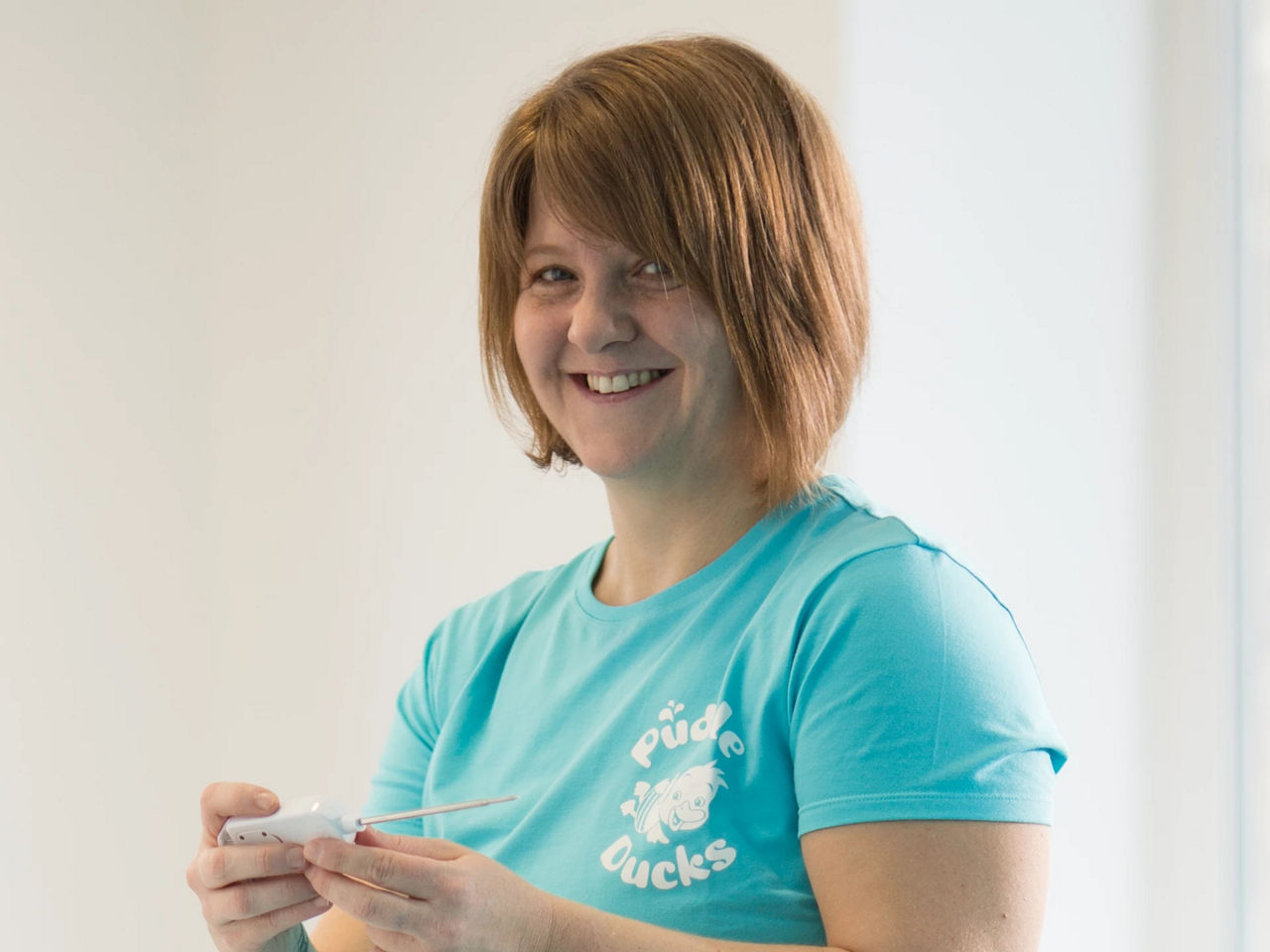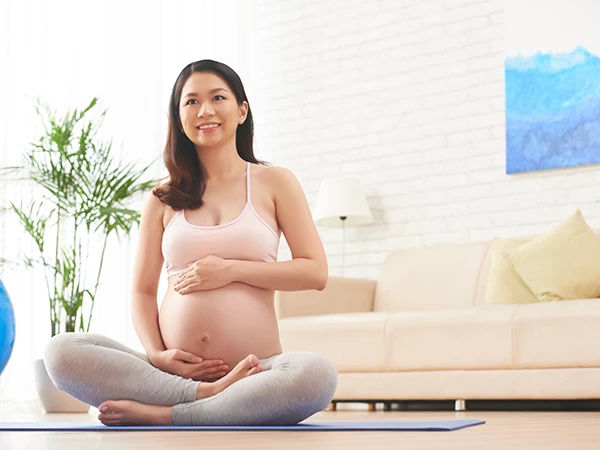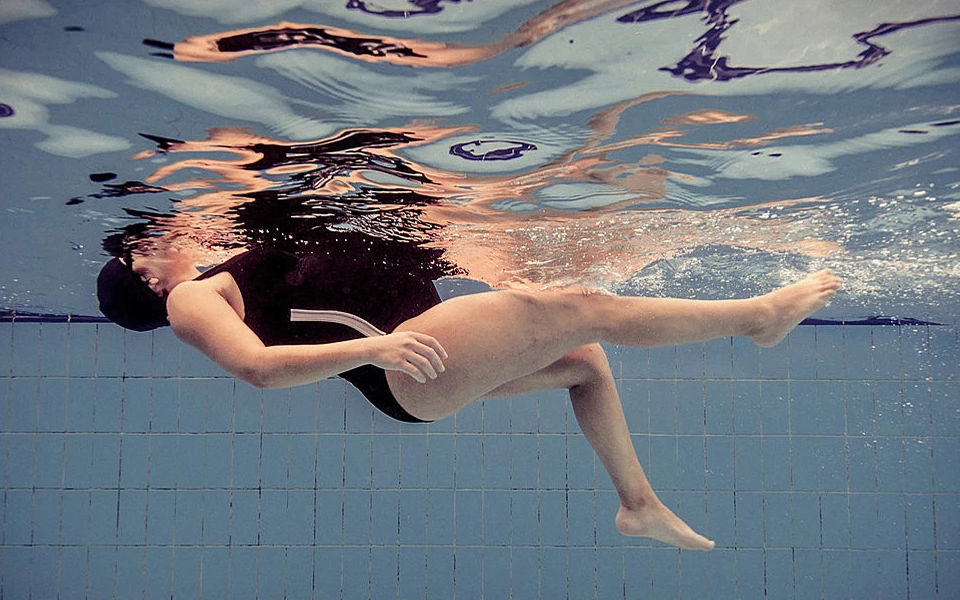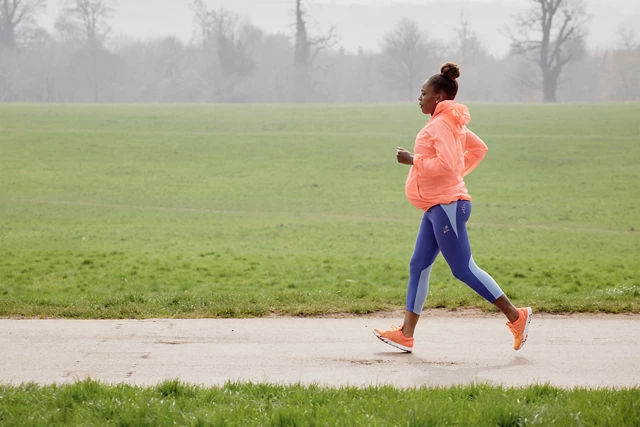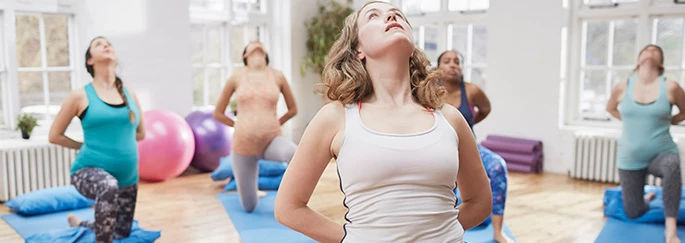Pregnancy swimming & aquanatal classes
The benefits of swimming during pregnancy
Water-based exercises such as swimming and aquanatal classes may result in less pregnancy tiredness1, a reduced risk of gestational diabetes2 and less pregnancy weight gain3. For your baby, it could mean a healthier heart rate4 and birth weight5. It may even help your baby's brain to mature sooner. The hydrostatic pressure of the water helps to reduce swelling, improve the circulatory and respiratory system and lower blood pressure6. And because it’s low-impact, there’s no stress on the joints.
However, as a result of the ongoing Coronavirus pandemic, swimming may not be an option for you. There are plenty of other ways to stay active throughout your pregnancy that can be done safely at home, such as pregnancy yoga or strength training exercises.
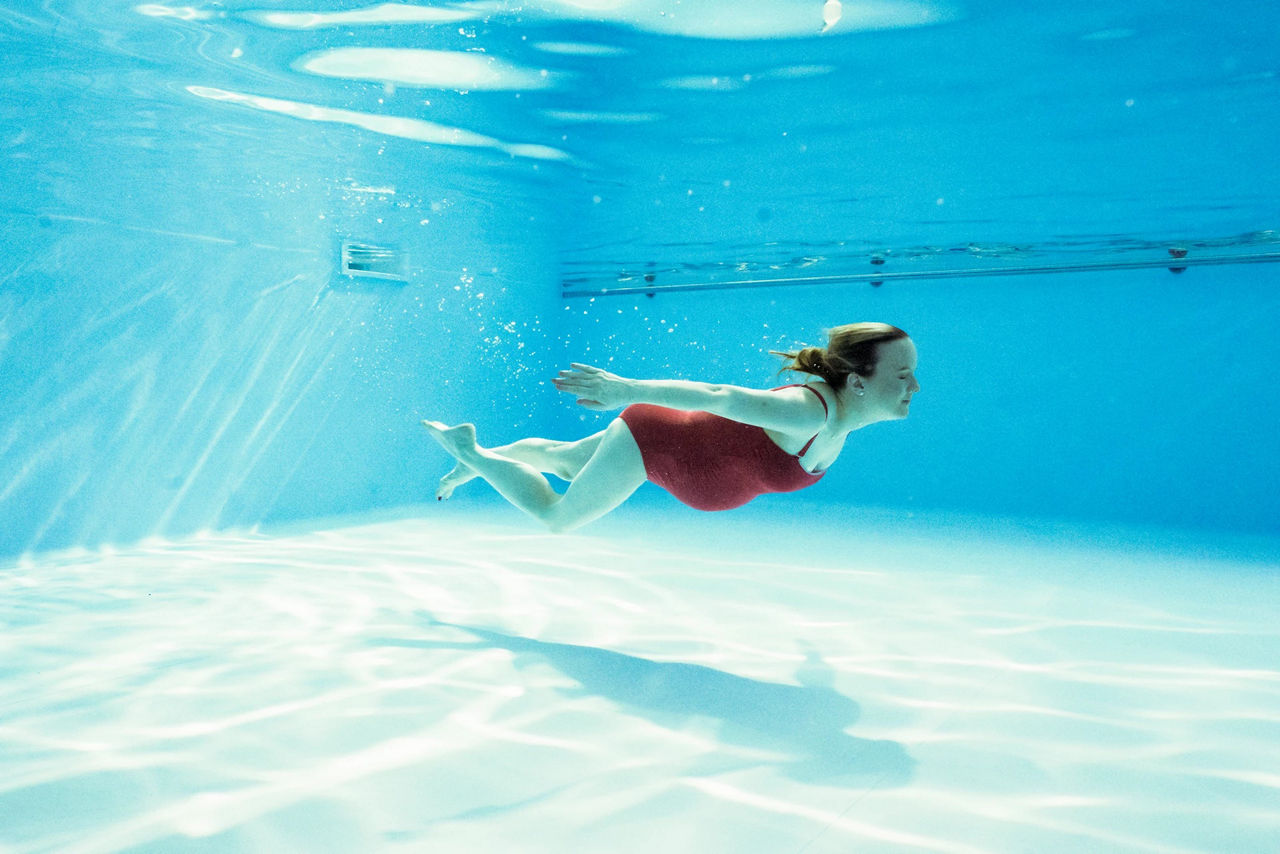
Swimming during pregnancy
What you'll need
You don’t need much to start swimming during pregnancy, but well-fitting swimwear and a float will keep you comfortable and help you get the most out of Ali’s routine:
- A maternity swimming costume with a built-in supportive bra, and a stretchy panel to accommodate your bump. Or a bikini if you’d prefer.
- A water bottle for the side of the pool to keep you hydrated throughout.
- A pool woggle (noodle) to use both as a support and a resistance aid to help strengthen muscles.
- Ankle or wrist weights if you’d like to increase the intensity of your workout.
Warm up
Before you start swimming or exercising, allow your body to warm up by walking across the pool whilst punching down with your fists into the water.
Continue warming up the body by practising heel raises – coming up on the toes whilst shrugging the shoulders.
Finish your warm-up with some lovely side sweeps, moving the water from one side of the body to the other, without twisting. Do this for approximately five minutes.
Don’t forget to cool down after you’ve finished exercising.
Aquanatal workouts by trimester
Choose your trimester:
Ali’s first sequence of moves is ideal for beginners and is designed to get your heart working whilst toning and strengthening your muscles. There are five moves to complete, and they can be repeated as many times as you feel comfortable with.
1. Hamstring and arm curl
With your feet shoulder-width apart, knees slightly bent and toes pointing forwards, bring your right heel up to kick your buttock but keep your thighs parallel. Bring your heel down and switch to the other leg. As you raise and lower each leg, raise and lower your arms in a bicep curl. Repeat for approximately 30 seconds.
2. Knee lifts with arm press
Standing with your legs hip-distance apart, lift each knee alternately. At the same time, push the palm of your hand out and away from your body, alternating arms. Repeat 20 times.
3. Sidestep with squat and push
Stand with your feet together, toes pointing forwards. Step to the right, then squat and push your hands down into the water. Bring your left foot to meet your right and stand up. Repeat time times on each leg.
4. Rolling
Bend your elbows and make a winding motion with your hands circling each other, in front of your body. The lower in the water you go, the more resistance you’ll feel. This is quite an intense exercise. Try to roll forward for 20 seconds, then backwards for 20 seconds.
5. Rocking horses
Standing with your left leg in front, raise your left knee to your chest. As you bring it back down to the floor, transfer your weight and kick your right leg out behind you. When you lean forward, push both hands out in front. Raise your left knee again, jumping back onto your right foot, and bringing your arms back to your body. Continue in a rocking motion, kicking your right leg out behind you whilst pushing the water away with your arms. Repeat 20 times, then switch legs.
This routine can be adapted to suit your fitness level. The moves use a woggle, but if you have any kind of shoulder, arm, neck or back injury, they can be completed without.
This routine will improve your muscles, strength and endurance levels, while increasing the speed of the repetitions will add an aerobic element.
1. Woggle press
Hold the woggle with one hand, arm down, hand next to your thigh. Bend your elbow to bring the woggle up, keeping it close to your body, then push it back down again. Repeat 20 times, then swap sides.
2. Woggle push
Hold the woggle with both hands under the water in front of your body. Push the woggle out, then pull it back towards you. Repeat 20 times.
3. Tyre pumps
With one foot, stand on the middle of the woggle, holding each end to keep it in place. Bring your knee up, then push the woggle back down. Repeat 20 times, then swap sides to work your other leg.
4. Seahorse swimming
Sit on the woggle, as if it were a seahorse, and let it carry your weight. Whilst floating on the woggle, kick – alternating your legs – to propel yourself around the pool. Do this for two minutes.
5. Squat and cuddle baby
With your toes pointing forwards and soft knees, place one hand at the top of your baby bump and the other at the bottom. As you squat down, swap your hands over so you are stroking your bump.s.
You can continue with any of Ali’s trimester 1 and 2 routines for as long as you feel able. But if you begin to tire more easily in your third trimester, this gentle sequence will help to open your hips and keep you active without too much exertion. Repeat the sequence two or three times, depending on your level of fitness.
1. Hip openers
With your feet shoulder-width apart, move your hips forward through the water, then push them back, keeping your back as straight as possible. Next, roll your hips around in a circular motion, and then roll them back the other way. Repeat for 30 seconds, rest for 10 seconds, then repeat.
2. Jogging on the spot
Shift your body weight from one foot to the other, lifting your feet off the floor one at a time. With your hands under the water, push each arm out alternately with each leg lift. Repeat for 30 seconds, rest for 10 seconds, then repeat.
3. Gathering in standing
With your feet shoulder-width apart, use your hands to scoop the water towards you, one arm at a time. Continue for 30 seconds, rest for 10 seconds and then repeat.
4. Supported swimming
Using a woggle for support, swim on your front or back, pointing your toes, and repeatedly kick your legs behind you. Swim for around five minutes.
5. Arm toner
Hold your arms down and close to your body. Slowly raise your arms out to the side, keeping your elbows straight, until your hands break the surface of the water, then push back down again. Repeat 20 times.
Stretching out and cooling down
A thorough stretch after your workout will help to release any remaining tension and reduce soreness. Watch Ali’s full stretching sequence:
How to swim safely in pregnancy
- Always inform your midwife or doctor of your intention to exercise during pregnancy.
- Eat little and often to maintain your energy levels, but no less than 30 minutes before entering the pool.
- Use the steps or a ladder to enter and exit the pool; twisting can stretch the stomach muscles and could lead to diastasis recti (separation of the stomach muscles) or increase the symptoms of pelvic girdle pain (PGP).
- Remember to warm up and cool down effectively, making sure you gently stretch out the muscles used during your session.
- Listen to your body. If it feels uncomfortable, either physically or mentally, take a break.
- Never hold your breath – remember to breathe deeply and continuously.
- Stand at a depth that’s not too deep and not too shallow – let the water just cover your chest.
- If you’re experiencing pelvic girdle pain, keep your feet hip-distance apart, avoid lifting your knees too high and make sure your toes are always pointing forwards.
related articles
More sports

Need some help?
You can get quick answers to common questions in our FAQs.
Alternatively, if you need help with general pregnancy or baby advice, or maybe on using or ordering our products - our expert team are always on hand to talk about feeding your baby.
- Gaston A, Prapavessis H. Tired, moody and pregnant? Exercise may be the answer. Psychol Health 2013;28(12):1353-69.
- Sanabria‐Martínez G et al. Effectiveness of physical activity interventions on preventing gestational diabetes mellitus and excessive maternal weight gain: a meta‐analysis. BJOG 2015;122(9):1167-74.
- Domenjoz I et al. Effect of physical activity during pregnancy on mode of delivery. Am J Obstet Gynecol 2014;211(4):401.e1-e11.
- May LE et al. Aerobic exercise during pregnancy influences fetal cardiac autonomic control of heart rate and heart rate variability. Early Hum Dev 2010;86(4):213-7.
- Bisson M et al. Physical activity volumes during pregnancy: A systematic review and meta-analysis of observational studies assessing the association with infant's birth weight. AJP Reports 2016;6(02):e170-e97.
- Freedman FB. Aqua Yoga. USA: Lorenz Books, 2000.
Last reviewed: 3 June 2020
Reviewed by Nutricia’s Medical and Scientific Affairs Team
